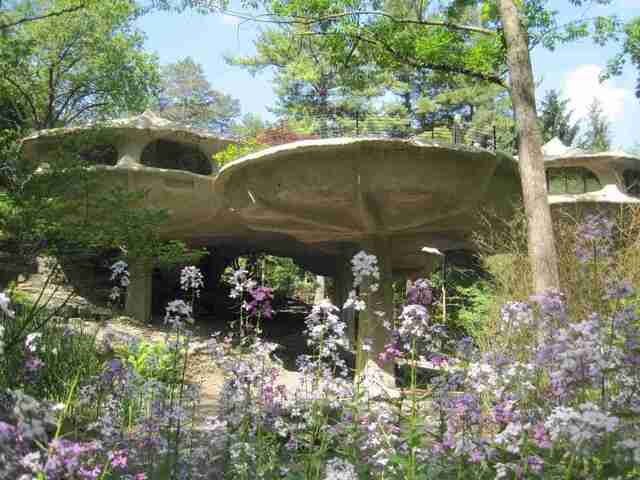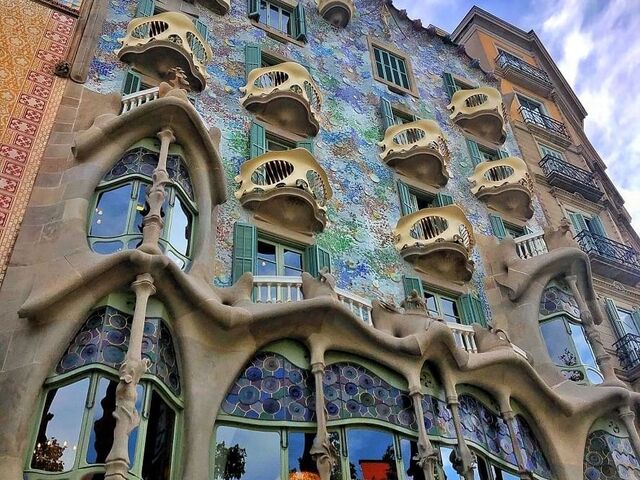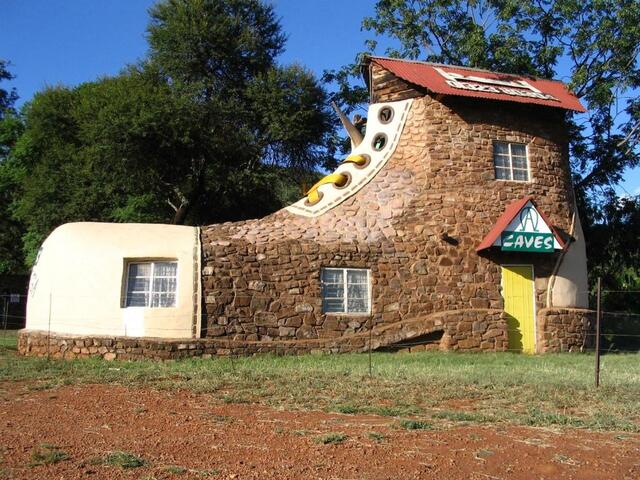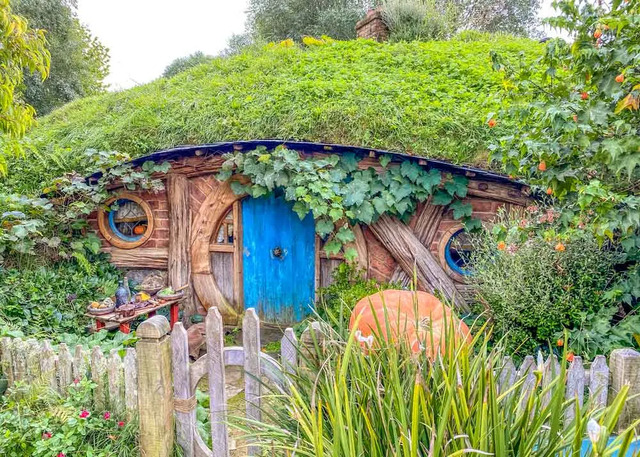Architecture has the power to go beyond function, transforming buildings into expressions of creativity and imagination. The house in the image above, with its face-like features, is a prime example of whimsical design that captivates and intrigues. In this article, we’ll explore real-world structures that share this playful, surreal approach to architecture
The Featured House: A Face Among the Trees
The house in the image above feels like something out of a dream—or perhaps a fairytale. Nestled in the woods, its anthropomorphic design gives it an unmistakable personality. The windows resemble eyes, the arched doorway looks like a mouth, and the curved lines of the roof and walls mimic the natural shapes of tree branches and bark. It’s as if the house is alive, watching over the forest as nature slowly reclaims it.
While this particular house is an AI creation inspired by surreal architecture, it reflects a style of design that exists in the real world. Anthropomorphic and organic architecture blurs the line between man-made structures and the natural world, transforming buildings into sculptures that tell stories. The house invites us to imagine its purpose—was it built as an artistic statement? A fantastical retreat? Or simply the vision of an eccentric architect? Regardless of its origin, it sets the stage for exploring similar real-world creations that celebrate the whimsical and the extraordinary.
Real-Life Examples of Whimsical Architecture
Across the globe, visionary architects and artists have turned their creative visions into reality, designing structures that rival the imagination of the house above. Here are some of the most stunning examples of whimsical architecture:
The Crooked House (Sopot, Poland)

One of the most surreal buildings in the world, the Crooked House in Sopot looks like it was pulled straight from a fairytale. Its wavy walls and distorted windows create the illusion of a house melting or bending under pressure. Designed by architects Szotyński and Zaleski, this playful structure draws visitors from all over the world and has become a symbol of creative freedom in architecture.
Video:
The Mushroom House (New York, USA)

Located in Perinton, New York, the Mushroom House is a whimsical home inspired by the organic shapes of fungi. Designed by architect James Johnson in the 1970s, the house features pod-like structures supported by stems, blending seamlessly into its wooded surroundings. It’s a reminder that architecture can be as natural and unrestrained as the environment it inhabits.
Video:
Casa Batlló (Barcelona, Spain)

Antoni Gaudí’s masterpiece, Casa Batlló, is a celebration of color, texture, and fantasy. The building’s curved lines, mosaic tiles, and bone-like supports make it one of the most iconic examples of surreal architecture. Its design draws heavily from nature, with the rooftop resembling the scales of a dragon and the windows evoking waves of the ocean.
Video:
Hundertwasserhaus (Vienna, Austria)
This vibrant apartment complex, designed by artist Friedensreich Hundertwasser, breaks all the rules of traditional architecture. Uneven floors, tree-covered roofs, and irregular windows give the building a sense of playfulness and individuality. Hundertwasser believed that architecture should reflect human creativity and connection to nature, and this building perfectly embodies that philosophy.
Video:
The Shoe House (Mpumalanga, South Africa)

Inspired by the nursery rhyme “There Was an Old Woman Who Lived in a Shoe,” this whimsical home in South Africa brings the tale to life. The shoe-shaped building was constructed by artist Ron Van Zyl as part of a larger fantasy-themed lodge, offering visitors a chance to step into a storybook setting.
The Hobbiton Houses (Matamata, New Zealand)

Famous for their appearance in “The Lord of the Rings” films, the Hobbiton houses in New Zealand are perfect examples of architecture blending seamlessly with the landscape. These homes, built into rolling hills, feature circular doors, thatched roofs, and lush gardens, creating a magical atmosphere that transports visitors to Tolkien’s Middle-earth.
Video:
The Artistic and Cultural Purpose of Whimsical Architecture
Whimsical architecture often goes beyond aesthetics; it reflects the cultural and artistic visions of its creators. By breaking free from rigid conventions, these designs challenge the boundaries of what buildings can represent.
In many cases, whimsical architecture tells a story. Casa Batlló, for instance, is often interpreted as the legend of Saint George slaying the dragon, with its rooftop symbolizing the dragon’s back. Similarly, Hobbiton captures the charm and simplicity of a fictional world that resonates deeply with fans of Tolkien’s work.
On a cultural level, these buildings become landmarks, drawing tourists and inspiring other architects to experiment with bold, creative designs. They remind us that architecture is not just about function—it’s about expression, storytelling, and creating spaces that evoke emotion.
The Intersection of Nature and Creativity
One of the most captivating aspects of whimsical architecture is its ability to integrate with the natural environment. Many of these buildings, like the Mushroom House or the Hobbiton homes, use organic shapes and natural materials to create harmony with their surroundings.
Even abandoned or aging structures, like the house in the image above, gain new character as nature reclaims them. Vines creep over walls, moss covers rooftops, and trees grow around foundations, enhancing their charm. This fusion of architecture and nature creates a sense of timelessness, reminding us that creativity is an extension of the natural world.
The Emotional Appeal of Whimsical and Surreal Architecture
Whimsical designs capture our imaginations because they evoke feelings of wonder, joy, and nostalgia. Anthropomorphic houses like the one in the image above can feel almost alive, inviting us to connect with them on a deeper level. They remind us of childhood stories, fairy tales, and the unrestrained creativity of the human mind.
These buildings also spark curiosity—what kind of person would build such a house? What stories do its walls hold? By challenging traditional norms, whimsical architecture invites us to see the world through a more playful and imaginative lens.
Conclusion
Whimsical architecture reminds us of the limitless possibilities of design, blending creativity with storytelling and emotion. From the Mushroom House to Casa Batlló, these unique creations inspire us to see the world through a lens of imagination and artistry. They stand as testaments to human ingenuity and the enduring magic of architectural innovation.
